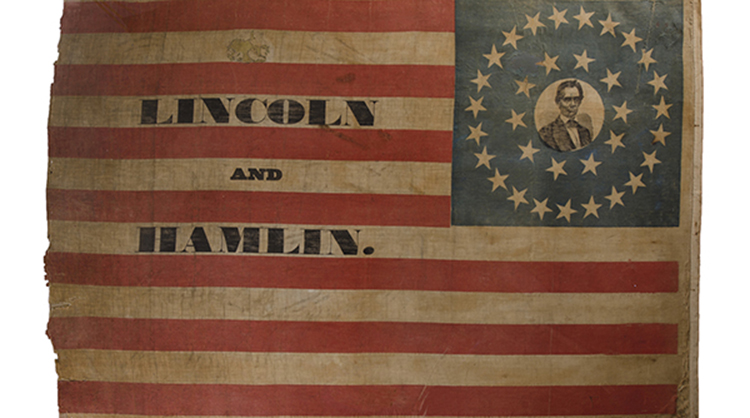EVENT:
As the United States elects its 45th president, the upcoming exhibition “Your Next President…! The Campaign Art of Mark and Rosalind Shenkman” at the George Washington University Museum and The Textile Museum will explore the evolution of American presidential campaigning. The exhibit features rare presidential campaign textiles produced in the 19th and early 20th centuries and collected by former GW Trustee Mark Shenkman and his wife Rosalind. The exhibition demonstrates the central role of the American flag in promoting campaigns more than a century ago. It also shows that the themes of immigration, protectionism, reform, prosperity and patriotism figured strongly in early campaigns and continue to resonate with voters today.
WHEN:
Media interested in attending a press preview of the exhibition on Thursday, Aug. 25, 2016, at 9 a.m. must contact Kurie Fitzgerald at kfitzgerald gwu [dot] edu.
gwu [dot] edu.
 gwu [dot] edu.
gwu [dot] edu. WHERE:
The George Washington University Museum
701 21st St., NW
Washington, D.C.
Foggy Bottom-GWU Metro (Blue, Orange and Silver lines)
ADMISSION AND PUBLIC INFORMATION:
Admission is free for museum members, children and current GW students, faculty and staff. A suggested donation of $8 for non-members will support the museum’s exhibitions, collections and educational programs.
The exhibition opens to the public on Aug. 27, and closes on April 10, 2017.
For the most up-to-date information on the museum's visiting hours, please check museum.gwu.edu/visit.
MULTIMEDIA:
Images of selected works available upon request.
BACKGROUND:
“Your Next President…! The Campaign Art of Mark and Rosalind Shenkman,” a new exhibition, displays rare campaign flags and textiles that show how presidential campaigning developed in the 19th century. The exhibition will include a rare flag that helped elect Abraham Lincoln in 1860 and some of the first American campaign textiles. Flags range in size from tiny (just the right size for a popsicle stick) to gigantic (to adorn balconies). The show details the shift in the use of the U.S. flag—from off-hand adaptations to promote candidates and products, to its singular current role as the nation’s sacred emblem. The exhibition shows how candidates such as William Henry Harrison and Theodore Roosevelt wielded powerful personal imagery to connect with the American public.
-GW-


